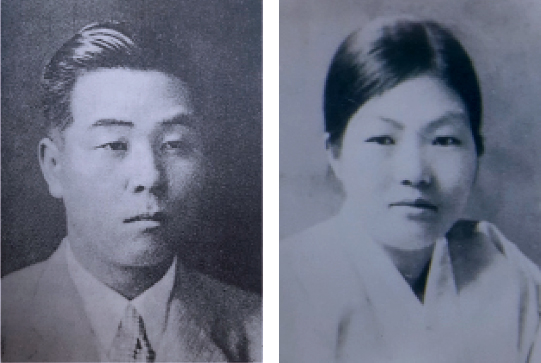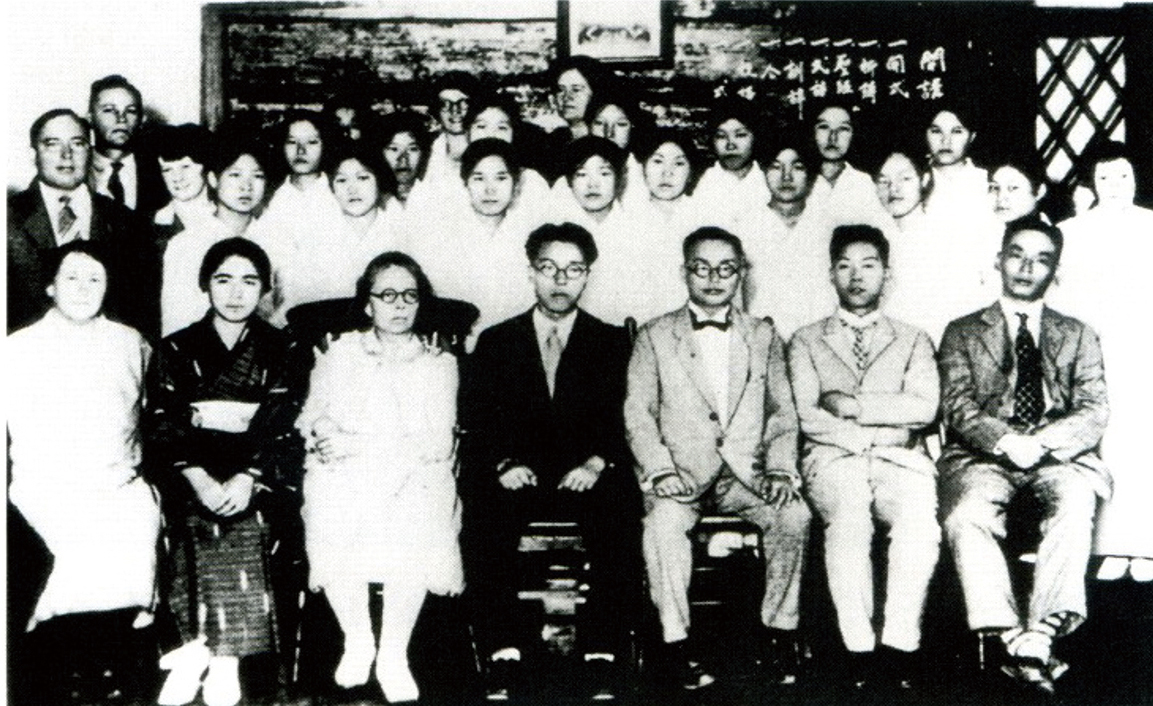Medical Education for Men
Medical Services Exclusionary of Women due to the Absence of Female Physicians
It was not until the late 19th century that western medicine was introduced in earnest to Joseon. Yeongik Min survived a serious injury inflicted by his enemy, Gaehwapa or the Enlightenment Party, during the Gabshin Coup, thanks to the missionary and physician Horace Newton Allen’s treatment, and as a result western medicine began drawing attention from the people of Joseon. While the benefits of this medicine became available when the first western medicine-based hospital, Jejungwon, was established in 1885, women were excluded to a great extent due to the prevalent social principle of Namnyeo Yubyeol (Distinction between the Sexes) promulgated by Confucianism and a law called Naewebeob. Given that it was strictly taboo for men and women to be in the same place (unless they were married), it was simply unimaginable that women could have their bodies examined by male physicians.
Witnessing how the women of Joseon were excluded from decent medical care, the Methodist physician Mary Fletcher Benton Scranton founded the nation’s first women-only hospital, Bogunyeogwan (保救女館) in 1887. Bestowed by Empress Myeongseong, the name Bogunyeogwan meant “a house that protects and saves women”. The patients paid only what they could afford, and those in dire financial situations received medical treatment for free. To express their gratitude, the female patients often gave chickens, eggs and gotgam (dried persimmon) as gifts to the physicians.

Dr. Rosetta Sherwood Hall, who trained Joseon’s first Female Physicians
Jongik Kim, Founder of the Woosuk Foundation
Dr. Rosetta Sherwood Hall
Medicine by and for Women
Succeeding Metta Howard, the first Head of Bogunyeogwan, who returned to the United States upon the completion of her services, Rosetta Sherwood Hall assumed the position as the second Head in 1890. Having witnessed how women did not have adequate access to medical care under the system of Korean patriarchy, Hall came to believe that the nation needed to train female physicians in order to improve the medical standards and sanitation of the nation, and consistently addressed the importance of “medicine by and for women”.
As there was no legally sanctioned medical school that was open to women, Hall encouraged some of the students at the Medical Institute of Gwanghye Women’s Academy – Sookyung Ahn, Haeji Kim and Youngheung Kim – to audit lectures at the Medical School of the Government General Hospital. They are considered the first women in Korea to have received a legitimate medical education, and later became the nation's first female physicians in 1918 upon the completion of their studies.

Takwon Kim, Doctor/National Independence Activist
Junghee Gim, who committed herself to the training of Female Physicians
Passion for Medical Schools for Women
Joseon Women’s Medical Training Institute Established
The Medical Institute of the Government General Hospital, whose name later changed to Kyoung-sung Medical College, forbade women to audit their lectures, and fewer female physicians directly resulted in lesser medical care for women. Hall rolled up her sleeves in order to found a medical school for women. An essay by a female physician, Shindeok Hyun, published in a newspaper in 1926, also stressed the importance of medical schools for women, as follows:
“Why does Joseon need hospitals for women? While education for women has been developing recently thanks to the influence of western civilization, women are still not considered autonomous members of the community, but only submissive members of patriarchal families. (...)
Given that the majority of people are ignorant of scientific knowledge and lack a sense of hygiene, the health of women heavily depends on female physicians. (...) Women consider hospitals jointly managed by men and women to be open only to men in reality and not to be welcoming to women. Therefore, the nation needs hospitals run only by women and open only to women.” (Gidokshinbo, 1 December 1926)
Having faced multiple challenges, Hall finally decided to establish a medical college for women by herself. Female physicians and pioneering Koreans who supported her cause joined with her to found Joseon Women’s Medical Training Institute on 4 September, 1928 – marking the beginning of official medical education for women in Korea. The fact that its name included “Joseon” instead of “Kyoung-sung” (the name that Japan forcibly assigned to Seoul) represented its patriotic philosophy and the founders’ strong will to fight the suppression of the Japanese Empire. Dr. Junghee Gil, who graduated from Tokyo Women’s Medical College, was designated the first Deputy Head of Joseon Women’s Medical Training Institute.
Woosuk Jongik Kim Donates a Fortune
Joseon Women’s Medical Training Institute Elevated to Women’s Medical College
The Japanese Empire forcibly changed the name of Joseon Women’s Medical Training Institute to Kyoung-sung Women’s Medical Training Institute when it re-approved its operations in 1933. When Dr. Hall retired and returned to her home country, Junghee Gil and her husband Takwon Kim took over the management of the Institute. Even though funding from Christian foundations came to a halt after the resignation of Hall, Kyoung-sung Women’s Medical Training Institute continued to train its students successfully, with 11 of them passing the Doctor’s License Examination. However, as financial difficulties became aggravated, Gil and Kim launched the Women’s Medical College Foundation in order to elevate the Medical Training Institute to the status of Medical College.
Takwon Kim asked Inchon Sungsoo Kim for support for the Foundation, as he profoundly agreed with its philosophy. However, unable to liquidate his assets, which were tied up with Bosung College and Joongang College, Inchon sought the support of Woosuk Jongik Kim of Suncheon. Out of his passion for the education of female physicians, Woosuk donated KRW 650k (equivalent to KRW +100b today) to Kyoung-sung Women’s Medical Training Institute through his will before his death on 6 May 1937. Thanks to his generous support, the Foundation was able to establish Kyoung-sung Women’s Medical College on 1 May 1938 – 48 years after the establishment of Bogunyeogwan by Mary Fletcher Benton Scranton.
Upon the gaining of national independence, Kyoung-sung Women’s Medical College changed its name to Seoul Women’s Medical College, before it started in 1957 to welcome both female and male students under a new name, Soodo Medical College, as the custom of Namnyeo Yubyeol had gradually faded away. Having later evolved into the College of Medicine of Woosuk University, it finally became what it is now – the College of Medicine of Korea University.
The history of the Korea University Medicine is the fruit of a noble cause, and of the commitment and sacrifices for the benefit of humanity of the great pioneers and leaders. It has grown out of the philanthropy and respect for diversity that Rosetta Hall fought for; the devotion to equality among genders, classes and countries and to the value of life that Takwon Kim and Junghee Gil embodied; and the benevolent contribution to the establishment of the nation’s first Women’s Medical College that Jongik Kim made. In addition to training female physicians, Dr. Hall committed herself to helping the underprivileged, and the first introduction of braille books to Korea was also her work. The Korea University Medicine continues to maintain her legacy by supporting the community and the people in it.

Opening of Kyoung-sung Women’s Medical College Hospital

Opening Ceremony of Joseon Women’s Medical Training Institute (4 September 1928)
(Rosetta Sherwood Hall (first row, third from left), Takwon Kim (first row, sixth from left), Sherwood Hall (third row, first from left), Mr. and Mrs. Appenzeller (third row, second & third from left)
Medical Center for the Community and for the Underprivileged
The honorable legacies of the history of the Korea University Medicine – philanthropy, respect for diversity and benevolence – continue to the present day. The Center established several branches – Guro Hospital in 1983, Yeoju Hospital in 1984 and Banwol Hospital in 1985 (whose name was then changed to Ansan Hospital) when the nation was undergoing rapid industrialization in areas that had limited access to medical services in the 1970’s and 80’s. Guro and Banwol, home to large industrial complexes, suffered a large number of industrial accidents, and Yeoju had limited access to good quality medical services compared to other urbanized areas.
Nowhere in the Guro industrial region was a good quality infirmary in the 70’s and 80’s. However, the situation changed, which can be illustrated with an example. A number of patients whose fingers were accidentally cut off were transported to Guro Hospital. One of them had all of his ten fingers severed by a book press machine at a bindery, and went through a 31-hour-long finger replantation operation. The surgeon Woo-kyung Kim (who is also a former Executive Vice President for Medical Affairs at Guro Hospital) succeeded in the microsurgical replantation of ten fingers for the first time in Korea.
After the 2014 Sewol Ferry disaster, Ansan Hospital led the medical support activities – including follow-up care and counseling for those impacted – as the city’s base hospital. Based on this experience, the hospital established the Danwon Medical Center for Disasters so it would be able to provide fuller support in the event of other national disasters. Furthermore, Ansan Hospital founded the Rosetta Hall Center in 2016 to provide the underprivileged foreign residents’ community in the city with medical treatment and interpretation services.
References_
90 Years of Korea University Medicine, “From the First Women-Only Hospital to the Tongil Academy of Medicine” published in The Korea University Newspaper (2 May 2021), Professor Heonjung Lee’s article on Diversitas Vol. 15.
Photos by_
Communications Team, Korea University Medicine



